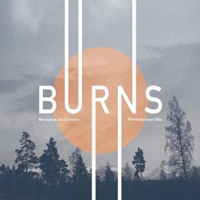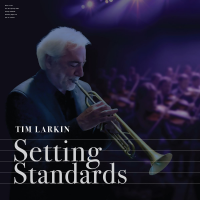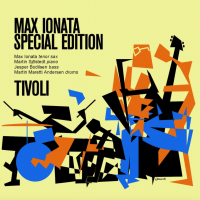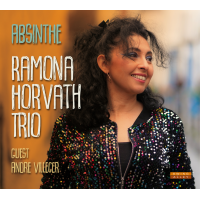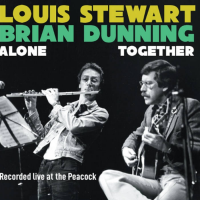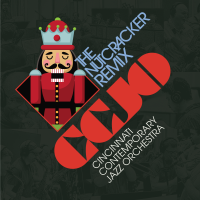Home » Jazz Articles » Extended Analysis » Stephan Micus: Stephan Micus: Nomad Songs
Stephan Micus: Stephan Micus: Nomad Songs
Unlike his last recording, Panagia (2013)—or, for that matter, previous ones such as 2010's Bold as Light and 2007's On the Wing—Nomad Songs works, however, with a much smaller instrumental palette. Songs that regularly layer instruments like six shakuhachi, seventeen voices or eight charangos are nowhere to be found; instead, the eleven tracks that make up Nomad Songs are surprisingly spare, with no more than six instruments found on just one track: the slow-paced "The Dance," which features twelve-string guitar; one long-necked lute from West China; one Afghan lute; two steel-string guitars and the genbri, a three-stringed bass lute.
Elsewhere, Micus' songs are as spacious as "The Blessing," which features but a single voice, singing a plaintive melody that feels somehow rooted in the middle east, or "Sea of Grass," where two tin whistles are played simultaneously to create a harmonious theme that feels, as is true of so much of Micus' music, less culled from any single culture and, instead, drawn from around the globe into a single, unified language that exemplifies the concept of music as a universal language—one that knows no borders and erects no boundaries. Similarly, "The Stars" is a rubato piece for solo twelve-string guitar that moves from simple lines to lush chordal constructs, all with the kind of calming quietude redolent of Micus' ability to create music that is sometimes less song and more atmosphere.
Those three of Nomad Songs' eleven tracks could, in fact, be performed live (on those rare occasions that Micus does so), but the rest are, indeed, compositions built in layers from the ground up, and over long periods of time. And, as has been true with almost every one of Micus' recordings, Nomad Songs introduces new instruments into his arsenal: in this case, the kalimba-like ndingo from Botswana—also a lamellophone, but one whose metal tongues consist, instead, of thicker iron pieces tuned with small pieces of wax, customized (another Micus MO) with an attached wooden box to lend the instrument greater resonance on the three compositions where it is found on the recording; and the Moroccan genbri used on "The Dance" in addition to four other tracks that include the darkly percussive "Laughing at Thunder"—a solo feature for the instrument but, with five of them layered through overdubbing, one that results in a strangely jittering sound felt in the gut as much as heard by the ears.
That Micus has been left alone to produce his works, with ECM label head Manfred Eicher nowhere to be found for decades and, since To the Evening Child, freed from the label's usual "two days to record, one day to mix" ethos—though in his early days Micus still found ways to buck that tradition by putting a month between each day, as he recounted in a 2005 All About Jazz interview—Micus' albums are usually constructed slowly, patiently and painstakingly over the course of many years. Recorded between 2012 and 2014, Nomad Songs is, despite the perennially pensive and reflective nature of his entire body of work, a shift from the more conceptually focused Panagia, which was based around prayers to the Virgin Mary.
Instead, the less overtly concept-focused Nomad Songs is defined more fully with the introduction of ndingo and genbri, despite nearly half of the album's tracks featuring neither. Still, with the two instruments spread liberally across the album, Nomad Songs' overall emphasis on thumb piano (ndingo) and flute or stringed instrument variants—including hollow reed flutes (nay and suling), bamboo and metal flutes (shakuhachi and tin whistle), lutes (genbri, rabab and rewab), and guitars ranging from six to fourteen strings—possesses a most specific personality, both joining it with and distancing it from albums like the voice-heavy Panagia, duduk-centric Towards the Wind (2002) and Twilight Fields (1987), where as many as 56 flowerpots, each with a different tonality, were layered to construct a single composition.
As a life's work, Micus' music has, over the years, been predicated on both a distinctive language and sonic universe that represent, perhaps, the most accurate definition of "world music." Nomad Songs may be simpler in concept and sparer in instrumentation than many of Micus' recent recordings, but its emphasis on the introduction of new instruments from countries around the world makes it nothing more than the continuation of that life's work; one which, despite the two-to-three year gaps between recordings, hopefully remains open-ended and with many more to come, as the now-62 year-old Micus continues his worldwide search for new ways to engender multicultural understanding through bringing diverse instruments and musics together from around the globe.
From Botswana to Bali, Morocco to Japan, Ireland to Afghanistan and Egypt to China, at a time when such a goal has become an increasingly urgent imperative the German-born Micus has evolved into a truly rare musical ambassador, whose ever-tranquil Nomad Songs is yet another entry in a consistently superb body of work dedicated to the idea that global cooperation, compassion and collaboration are, indeed, absolutely possible.
Track Listing
Everywhere, Nowhere; Leila; The Promise; The Stars; The Spring; The Blessing; The Feast; Laughing At Thunder; Sea Of Grass; The Dance; Under The Chinar Trees.
Personnel
Stephan Micus
guitar, 12-stringStephan Micus: ndingo; genbri; steel string guitar; suling; voice; nay; rewab; rabab; twelve string guitar; fourteen string guitar; tin whistle; shakuhachi.
Album information
Title: Nomad Songs | Year Released: 2015 | Record Label: ECM Records
Tags
PREVIOUS / NEXT
Support All About Jazz
 All About Jazz has been a pillar of jazz since 1995, championing it as an art form and, more importantly, supporting the musicians who make it. Our enduring commitment has made "AAJ" one of the most culturally important websites of its kind, read by hundreds of thousands of fans, musicians and industry figures every month.
All About Jazz has been a pillar of jazz since 1995, championing it as an art form and, more importantly, supporting the musicians who make it. Our enduring commitment has made "AAJ" one of the most culturally important websites of its kind, read by hundreds of thousands of fans, musicians and industry figures every month.




